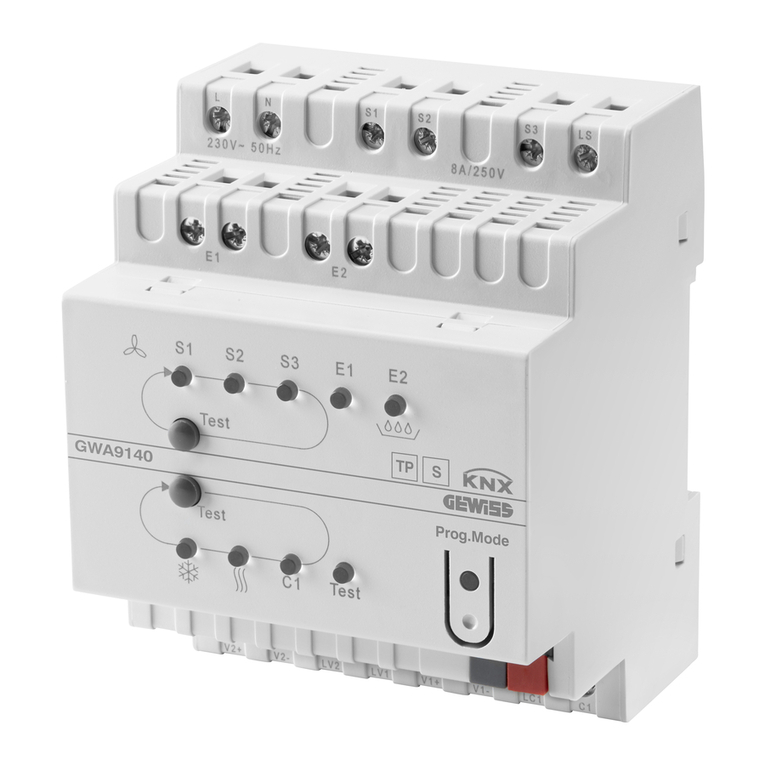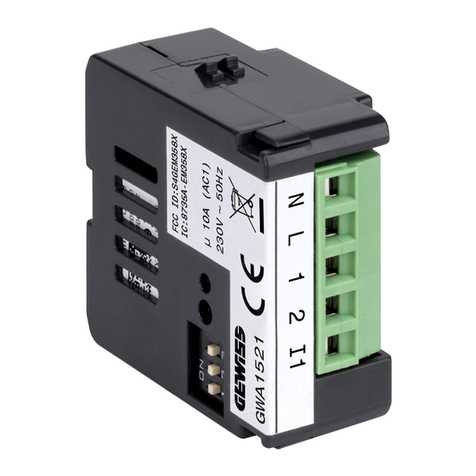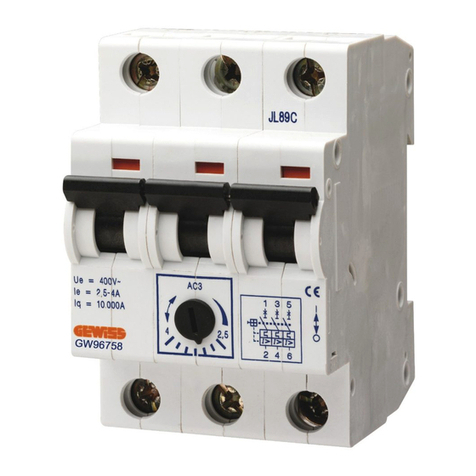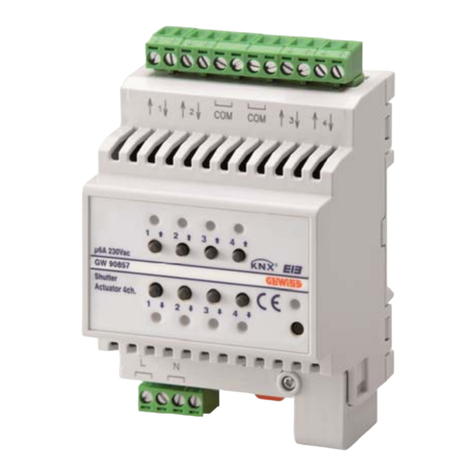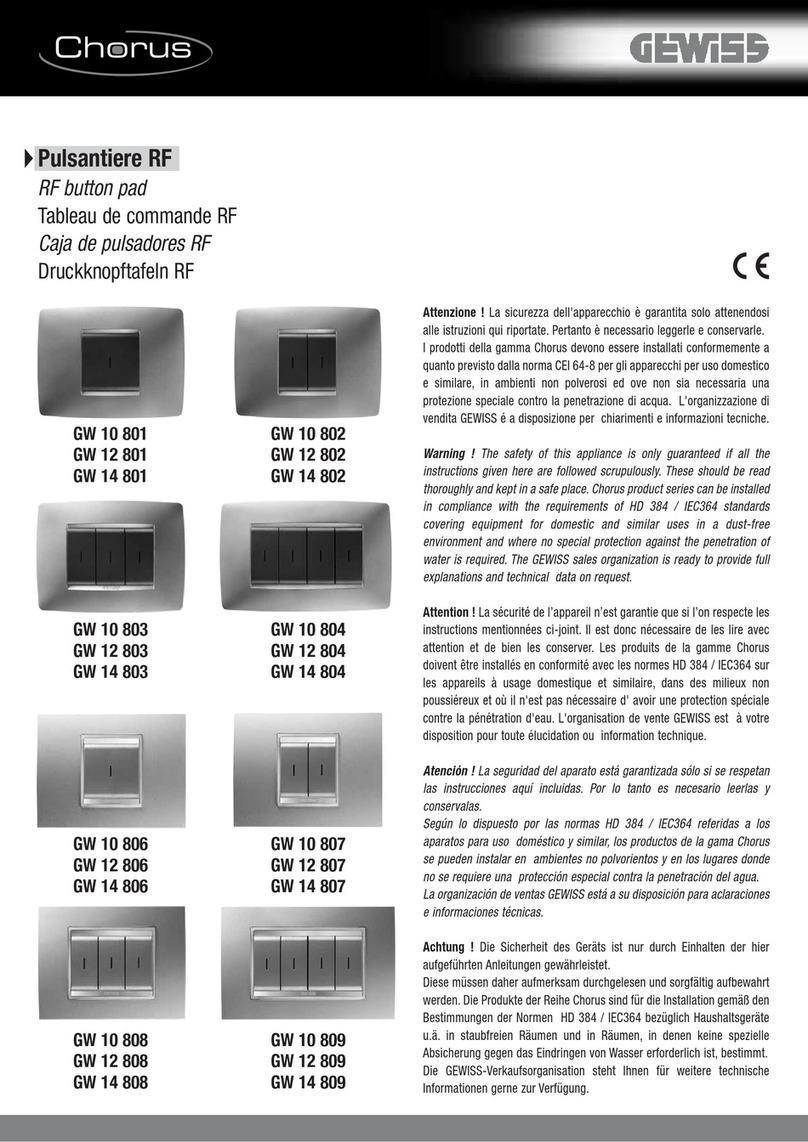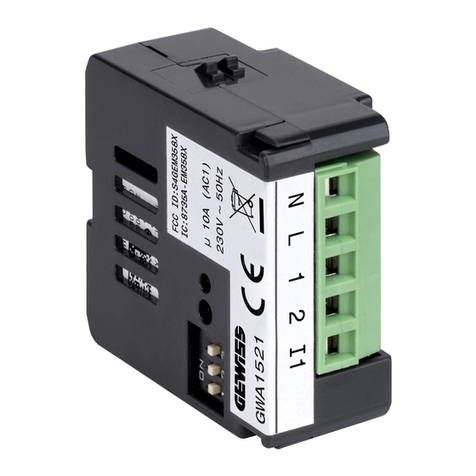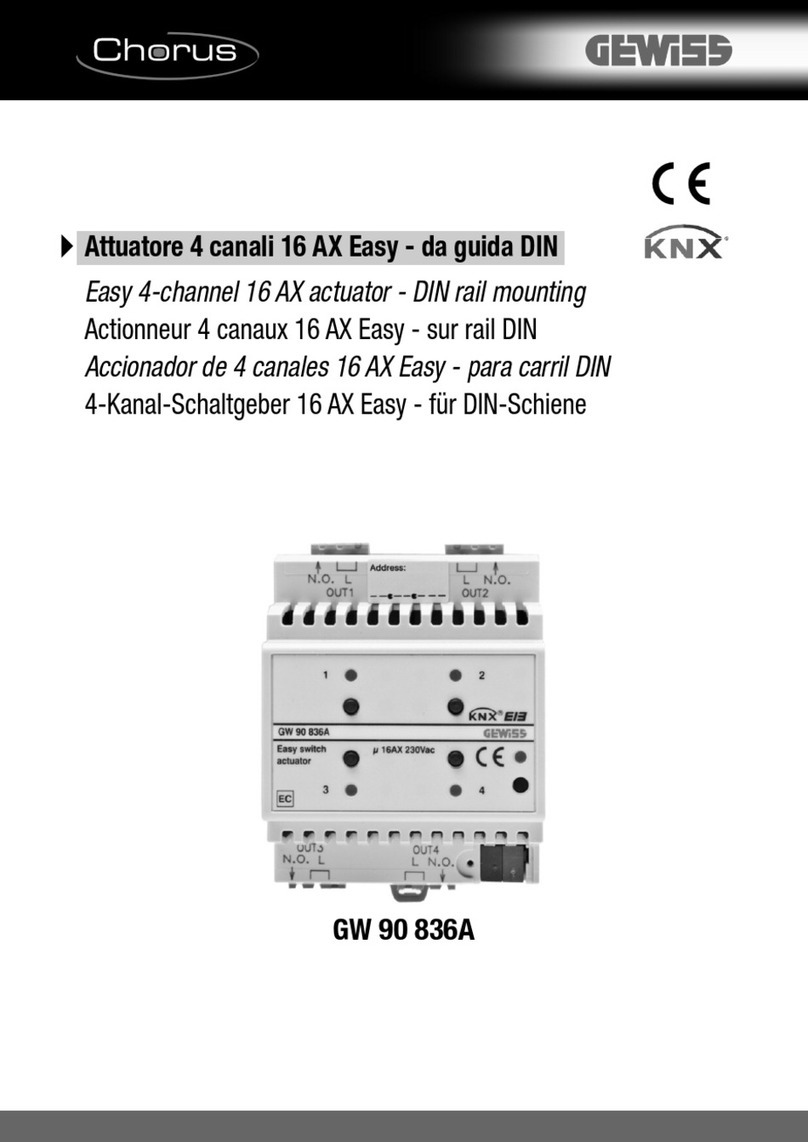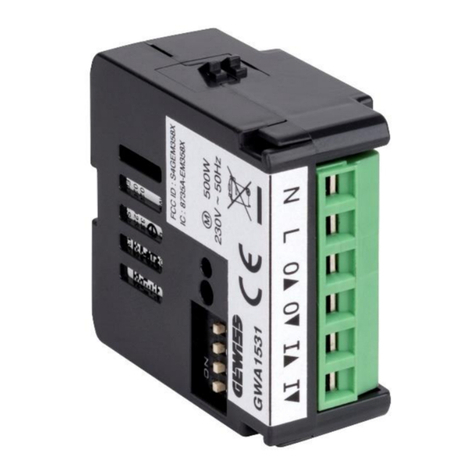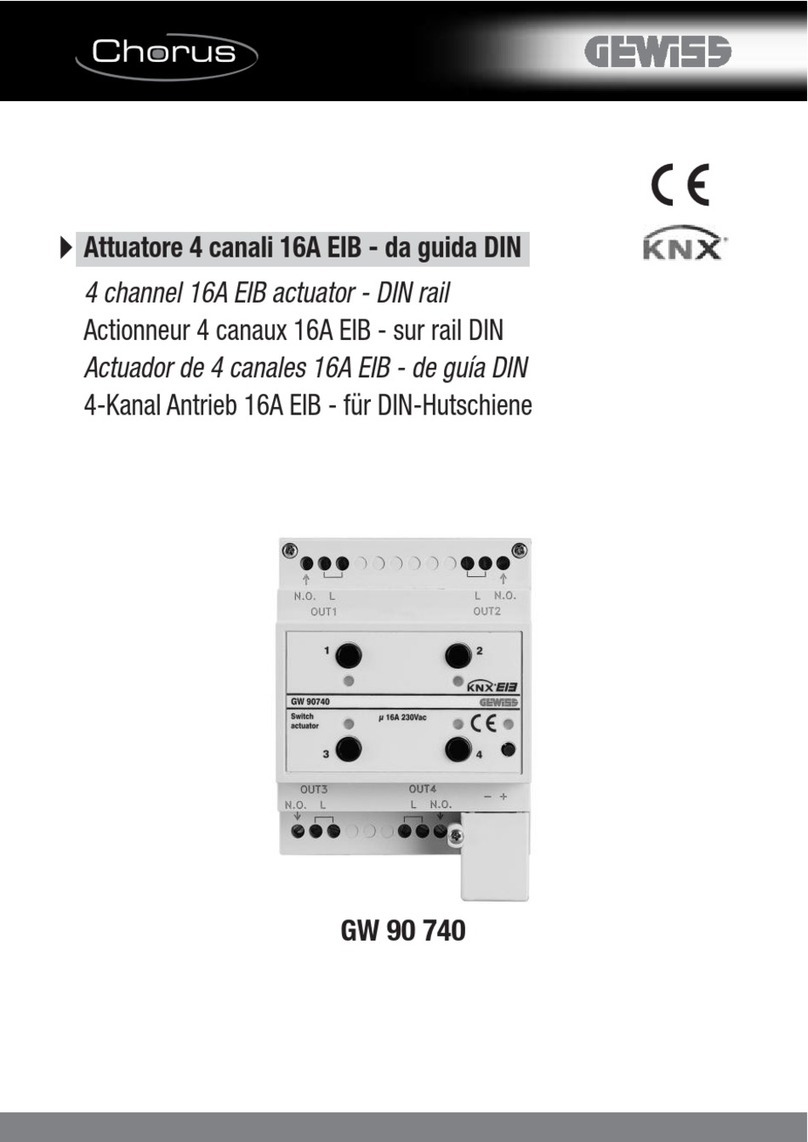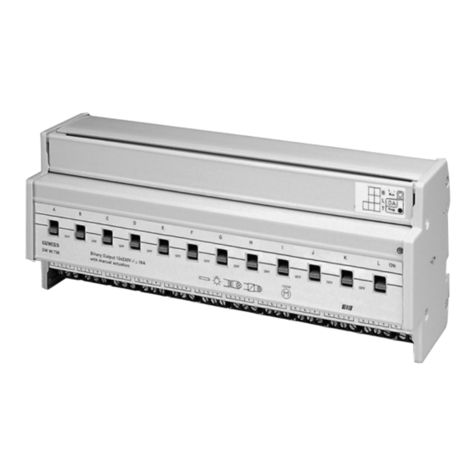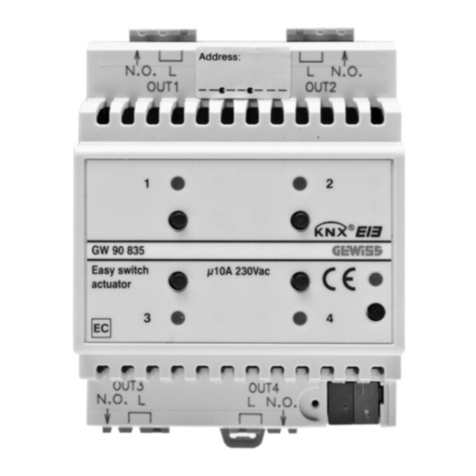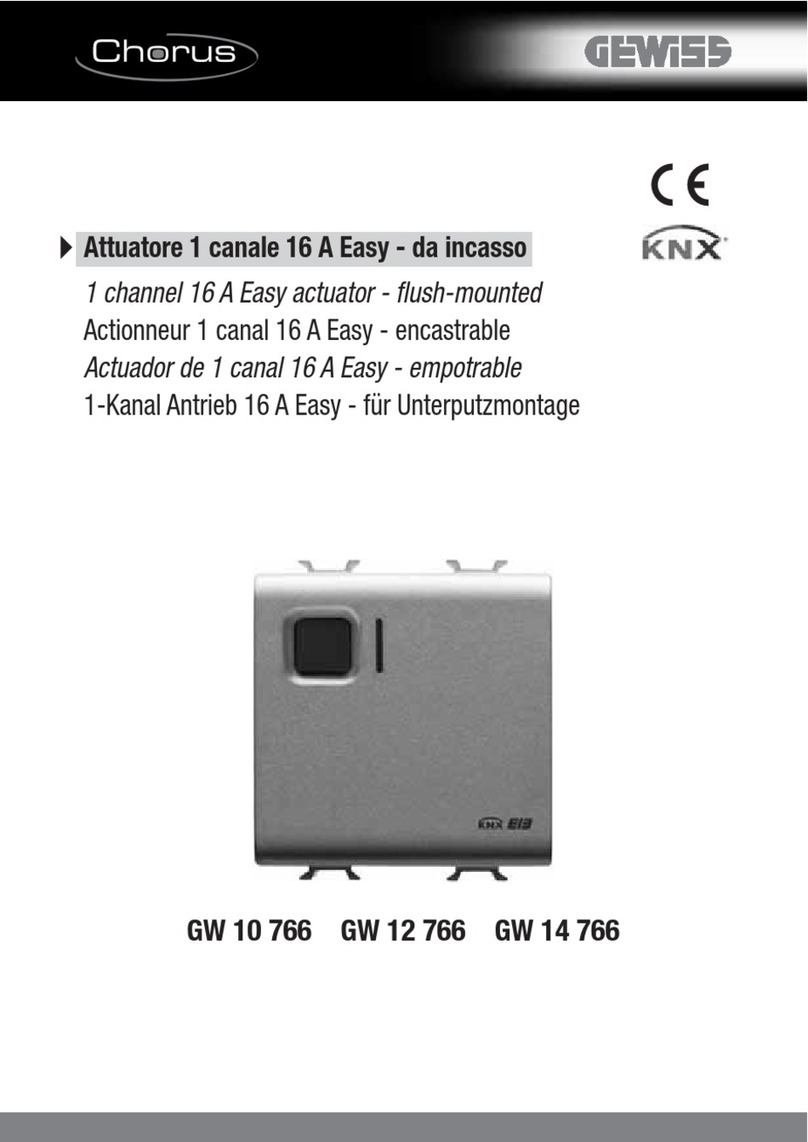6
¾3.1.2 Night lighting
This is to activate/deactivate the lighting function of the front yellow amber coloured LEDs; the settings
are:
•deactivated
The front yellow amber coloured LED will never be working, therefore when the load is deactivated (open
if NO/closed if NC) the front indicator light will not be backlit.
•active
The front yellow amber coloured LED is working when the load is deactivated (open if NO/closed if NC);
in this case, the front indicator light is backlit by the yellow amber LED indicating that the load status is
deactivated, in the case of lack of light in the environment, it also acts as a device localisation light.
3.2 Communication objects
The Settings menu makes the following communication objects visible (see Diag. 3.2.):
Diag. 3.2
¾3.2.1 Switch
When the device receives a telegram on this communication object, according to the command received,
it will switch the changeover contact following the configured settings and, through the Status object, it
will send the load activated/deactivated status information.
When the device receives a switch ON command, the changeover contact is immediately switched
(closed if NO/open if NC); on receiving a switch OFF command, it returns to its normal condition (open if
NO/closed if NC).
The enabled flags are C (communication), W (written by bus) .
The standard format of the object is 1.001 DPT_Switch, the size of the object is 1 bit and the commands
it interprets are switch ON/OFF.
¾3.2.2 Status
Using this communication object, the device communicates the activated/deactivated status of the
connected load.
When the device switch ON the load command (close the NO contact/open the NC contact), immediately
sends the load activated status information by a bus telegram with a "1" logic value; vice versa, when the
device switch OFF the load command (open the NO contact/close the NC contact), immediately sends
the load deactivated status information by a bus telegram with a "0" logic value.
The activated flags are C (communication), R (read by bus) and T (transmission) .
The standard format of the object is 1.001 DPT_Switch, the size of the object is 1 bit and the information
it contains is load status ON/OFF.
